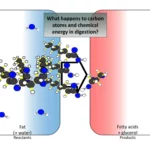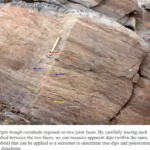This comprehensive guide dives deep into the ExploreLearning Carbon Cycle Gizmo, providing not just answers, but a thorough understanding of Earth’s carbon flow. We’ll explore how this interactive tool illuminates the intricate processes governing carbon’s journey through our planet.
Deciphering the Carbon Cycle with the Gizmo
Understanding the carbon cycle can be challenging, but the ExploreLearning Carbon Cycle Gizmo offers an engaging way to visualize and interact with this complex system. Think of it as a digital detective kit, allowing you to trace carbon’s path through the atmosphere, biosphere, hydrosphere, and geosphere.
Navigating the Gizmo Interface
The Gizmo presents a user-friendly interface divided into three key components:
- The Simulation: This interactive model visually represents the carbon cycle, using arrows to depict carbon flow between different reservoirs. You can manipulate variables and observe the effects in real-time.
- The Data Table: This section provides numerical data on carbon levels in each reservoir, updating dynamically as you interact with the simulation.
- The Graph: Visualizing the data over time, the graph reveals trends and fluctuations in carbon levels, offering insights into the system’s dynamics.
Unlocking the Gizmo’s Potential: Activities and Insights
The Gizmo offers a range of interactive activities designed to enhance your understanding of the carbon cycle:
Activity A: Tracking a Carbon Atom’s Journey
Imagine tagging a single carbon atom and following its adventures across the planet. Activity A allows you to do just that, virtually tracing carbon’s path through various processes:
- Photosynthesis: Plants absorb atmospheric CO2, converting it into organic matter.
- Respiration: Living organisms release CO2 back into the atmosphere as they use energy.
- Decomposition: Decomposers break down dead organic matter, releasing carbon back into the environment.
- Combustion: Burning fossil fuels releases stored carbon into the atmosphere as CO2.
- Ocean Uptake: The ocean acts as a significant carbon sink, absorbing CO2 from the atmosphere.
This activity highlights the interconnectedness of the carbon cycle and the continuous flow of carbon between different reservoirs. [Consider linking to a specific section within the Gizmo or a related resource here.]
Activity B: Human Impact on the Carbon Cycle
Human activities have significantly altered the natural carbon cycle, primarily through:
- Fossil Fuel Combustion: Burning fossil fuels releases massive amounts of CO2, increasing atmospheric concentrations and likely contributing to climate change.
- Deforestation: Removing trees reduces the planet’s capacity to absorb CO2, further exacerbating the greenhouse effect.
- Industrial Processes: Various industrial activities release CO2 and other greenhouse gases, adding to the atmospheric burden.
Activity B allows you to explore the consequences of these actions, visualizing the impact on atmospheric CO2 levels and other aspects of the carbon cycle.
Beyond the Answer Key: Deeper Understanding
While finding the Carbon Cycle Gizmo answer key is helpful, true understanding lies in grasping the underlying concepts and their real-world implications. This Gizmo empowers you to:
- Experiment and Explore: Manipulate variables, observe outcomes, and draw conclusions about the carbon cycle’s dynamics.
- Connect to Real-World Issues: Understand the links between the carbon cycle, climate change, ocean acidification, and other pressing environmental challenges.
- Think Critically: Analyze data, interpret graphs, and formulate your own hypotheses about carbon cycle interactions.
Addressing Common Questions and Misconceptions
Many students search for “carbon cycle gizmo answer key” seeking quick solutions. While answers are important, we emphasize understanding the why behind them. This guide addresses common misconceptions and promotes a deeper understanding of the carbon cycle’s complexity.
The Carbon Cycle and Beyond: Ongoing Research
Our understanding of the carbon cycle is constantly evolving. Ongoing research explores areas like:
- Ocean Carbon Uptake: How will rising ocean temperatures affect the ocean’s ability to absorb CO2?
- Soil Carbon Sequestration: What role do microorganisms play in soil carbon storage?
- Carbon Capture Technologies: Can we develop effective methods to remove CO2 from the atmosphere?
When your child is prescribed Augmentin, use our handy augmentin pediatric dose calculator. For information on alveoplasty, a surgical procedure for cleft lips and palates, see our resource on alveoplasty.
This guide, combined with the interactive power of the Carbon Cycle Gizmo, provides a strong foundation for understanding this vital process and its impact on our planet. Engage, explore, and continue learning – the journey of discovery never ends.
- Unlocking 2-Letter Words with U: The Definitive Guide - April 4, 2025
- Unlock Words with the Letters THREE: Top Unscramble Tools 2025 - April 4, 2025
- Master Scrabble: X & Z Words for High Scores - April 4, 2025
















